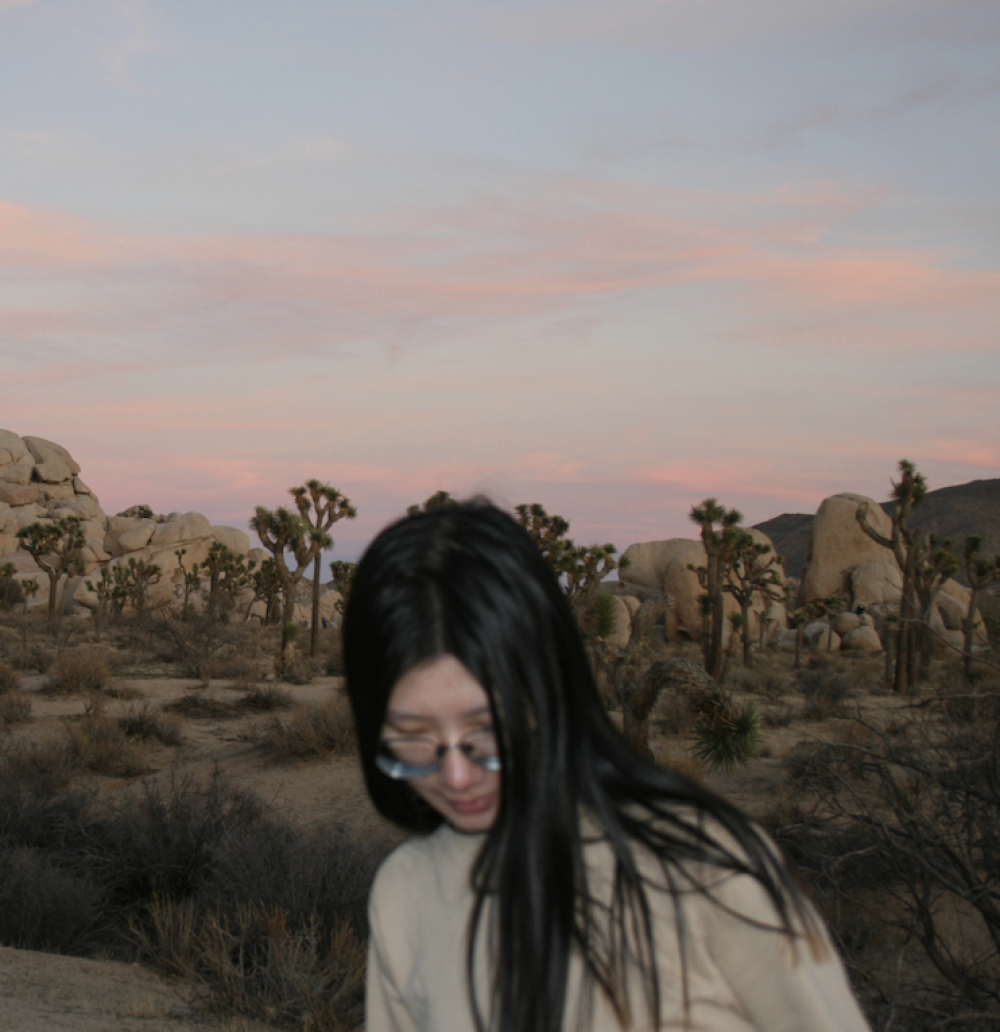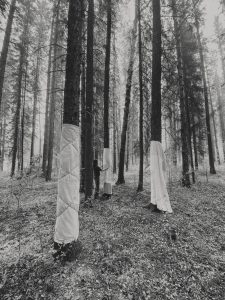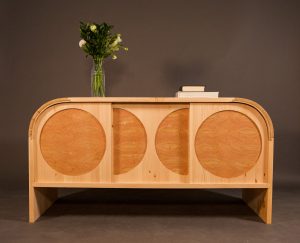When the Dust Settles
Emilie Jingyi Liu
See it On Campus: Level 2
Visitor Info
“We cannot have objective historical knowledge because we do not have access to a given past against which to judge rival interpretations.”
(Bevir, 1994)
01 Project Overview
Timeline: November 2023 – December 2023
Role: Editorial Designer, Researcher
Tools: InDesign / Adobe Illustrator / Laser Printer / Risograph Printer
When the Dust Settles is an intergenerational editorial design project that intersects family archives, life stories, and modern Chinese history. The book’s four chapters narrate the life journeys of my grandparents, parents, and relatives within the context of four significant historical events.
Through the layered contexts of diaries, photographs, letters, and sketches, the project offers a unique glimpse into the intertwined lives of individuals across generations, revealing how history serves as a hidden thread shaping everyone’s destiny.
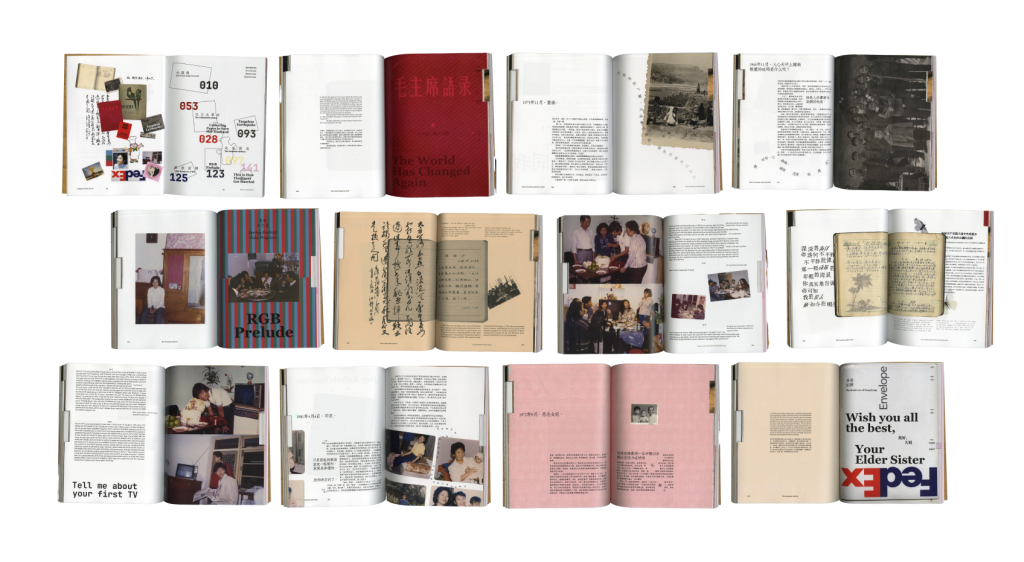
a. Why retell the history?
Reflection on Chinese historical events often revolves around seeking metanarrative, which is something being taken out of cultural and humanity context and exists as a presumed objective history. While we learn and consider history books as the sole version of history, this project allows readers from different cultural backgrounds to (re)study modern Chinese history from the witnesses’ perspective, aiming to construct the most neutral and storytelling narrative of history while respecting the life stories of the intergenerational family members.
The publication juxtaposes four famous historical events— the Great Leap Forward, the Cultural Revolution, the Economic Reform, and the Handover of Hong Kong— commonly taught in history classes with the interpretations of history recorded in diaries and photo albums by family members. This emphasizes the comparison in the focus of history narration between the two different narrators.

A sketch of the struggle session (批斗会) during the Cultural Revolution by my grandfather, 1968.
b. How to tell multiple stories at the same time?
The main visual treatment method throughout the publication is the layered context. I employed photographs, written content, newspapers, and additional zines to enhance the depth and thoroughness of historical narration. This approach showcases the contrast between different textures of media and the variety of information each medium can convey.

Main content + old photos + newspaper excerpt + government communique layered in one page

The zine inserted in the book + the flyer inserted in the zine provided an additional story of CCTV Spring Festival Gala.
Content-wise, as time serves as the central thread and most important theme of the book, I concluded with a visual timeline encompassing all historical events and family history detailed within. Through this timeline, readers can discern patterns of how political events influenced individual behaviour, the interplay between life paths and historical context, and the catalysts behind the commencement of political events.

c. Who is the Target Audience
The publication targets individuals who have grown up with a Chinese cultural background and, more broadly, the general public interested in uncovering untold history. It is written in both simplified Chinese and English, catering to different audience groups through language-specific content.
The Chinese sections of the publication include old newspapers and archives, which necessitate cultural background recognition for full interpretation, both visually and linguistically. On the other hand, the English sections offer comprehensive context on Chinese history, translating and providing explanations for the written content in the family archives. This approach ensures accessibility for the audience to delve deeply into history without language barriers.
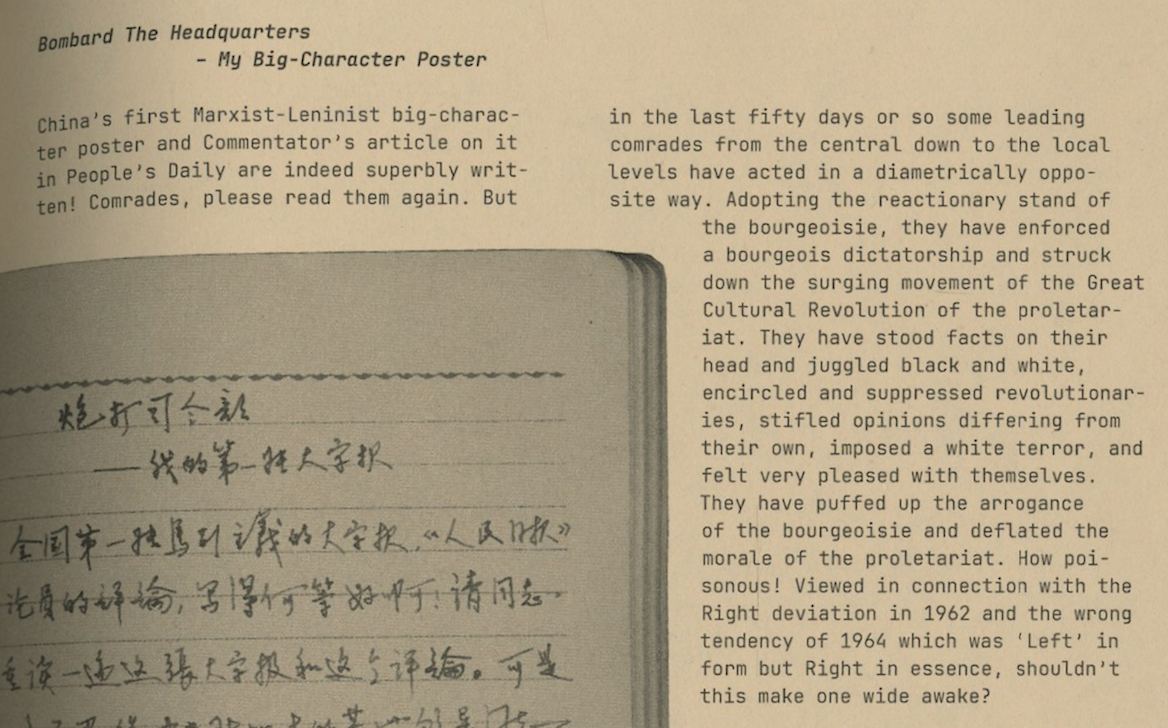
English translations besides the diary
02 Research Process
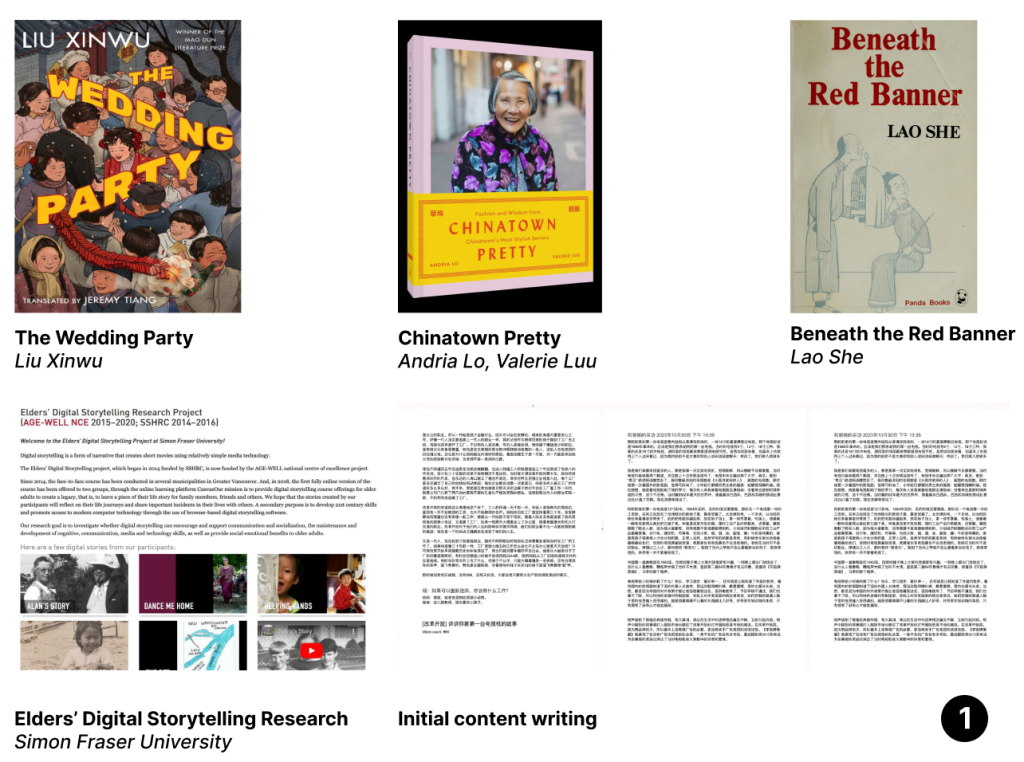
Research on historical novels and storytelling projects for seniors + Initial content writing.
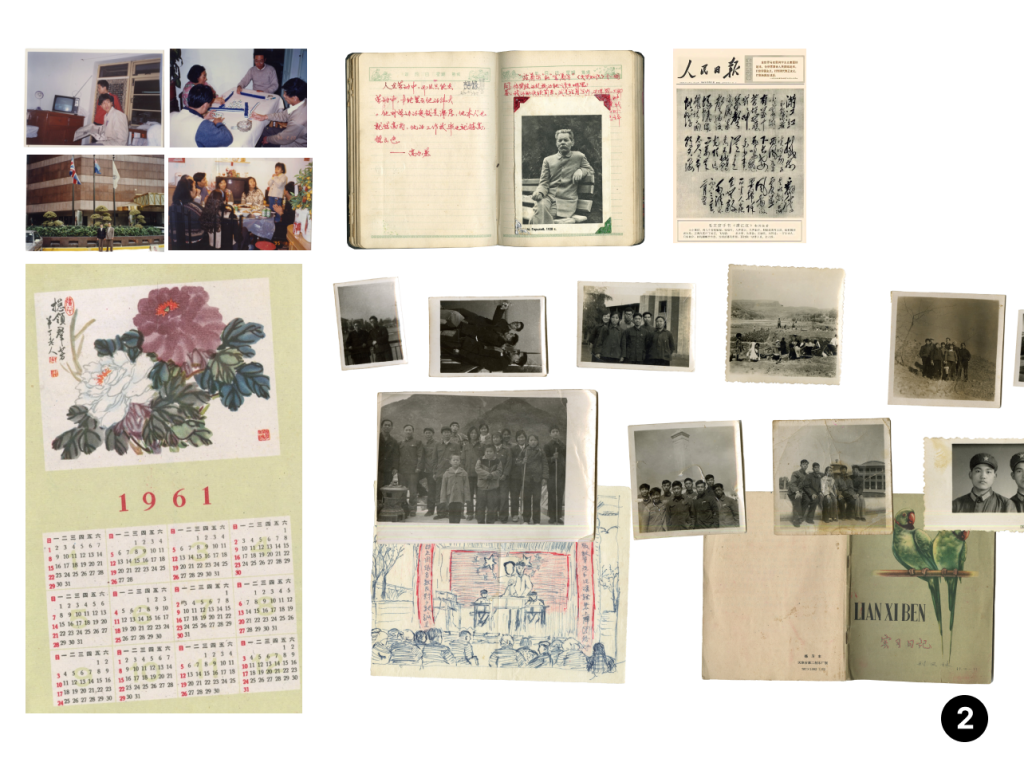
Shipping + scanning family archives.
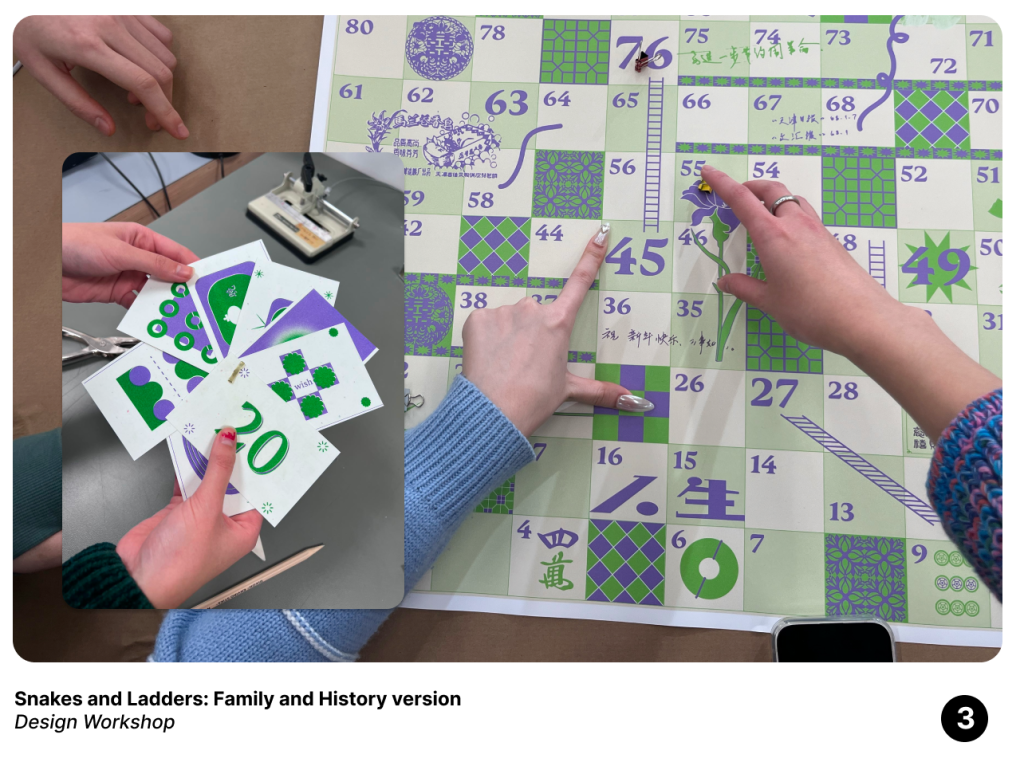
Designing a Snakes and Ladders workshop for collecting life stories from parents.
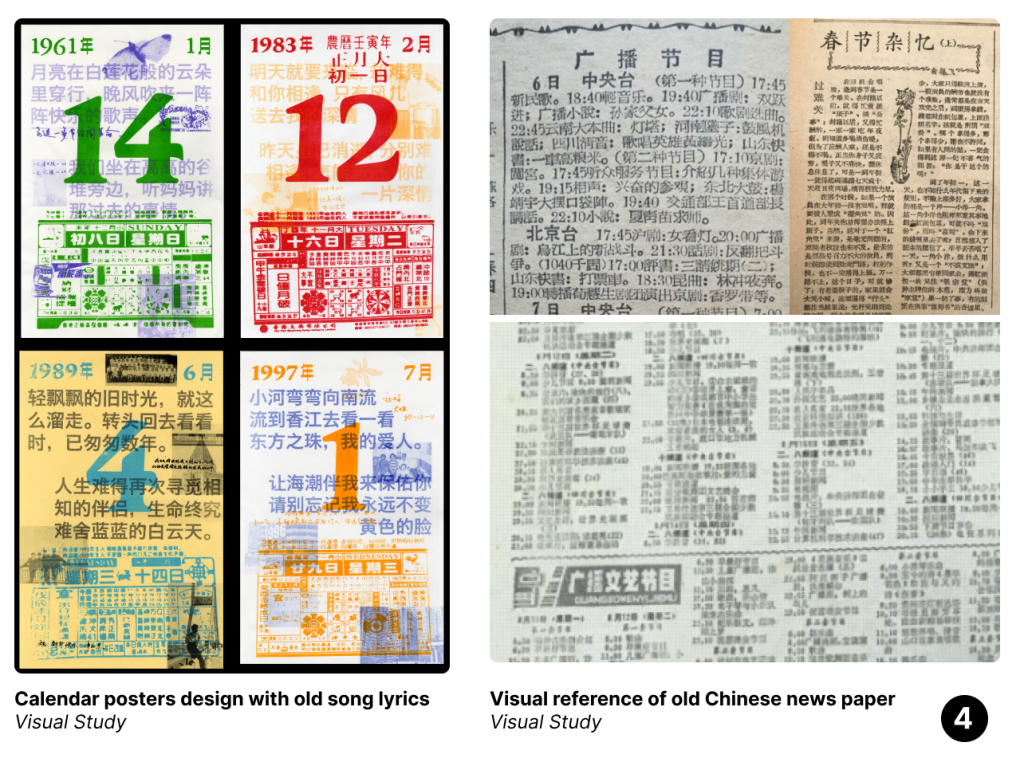
Designing 4 calendar posters with the family photos and the song lyrics from dad’s playlist based on the visual research.
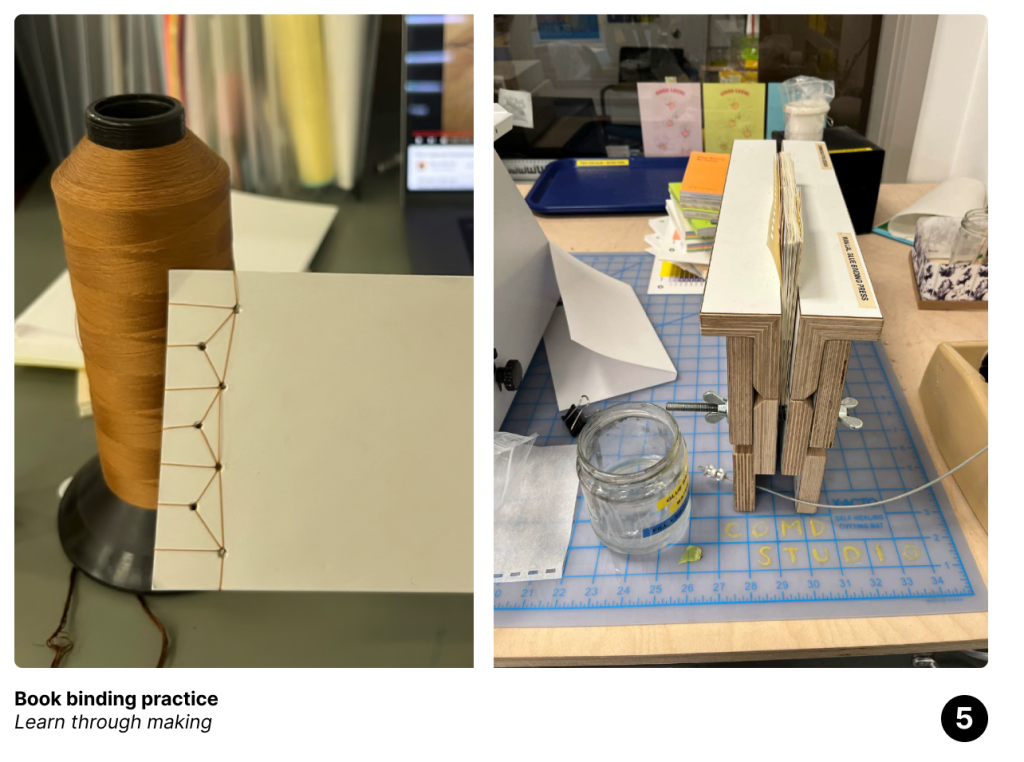
Learning different ways of book binding.

Making book dummies and test prints with risograph printer.
➐ Participatory Design and Zine Making
The content in the chapters and the zines is interview-based, focusing on the process of actively listening and recording the words of the older generations in my family. Recognizing the knowledge gap resulting from historical changes, I conducted multiple participatory design sessions during the initial research. I sought advice from my family members on incorporating specific visual contexts into the publication.
Drawing from their insights in editing and storytelling, I incorporated their understanding of history and their life stories into the three zines. These zines served as three additional family stories, covering significant events such as the Cultural Revolution, the Tangshan Earthquake, and the acquisition of the family’s very first TV. The zines are inserted into the corresponding chapters of the book.

Read the zines!
03 Final Book Design
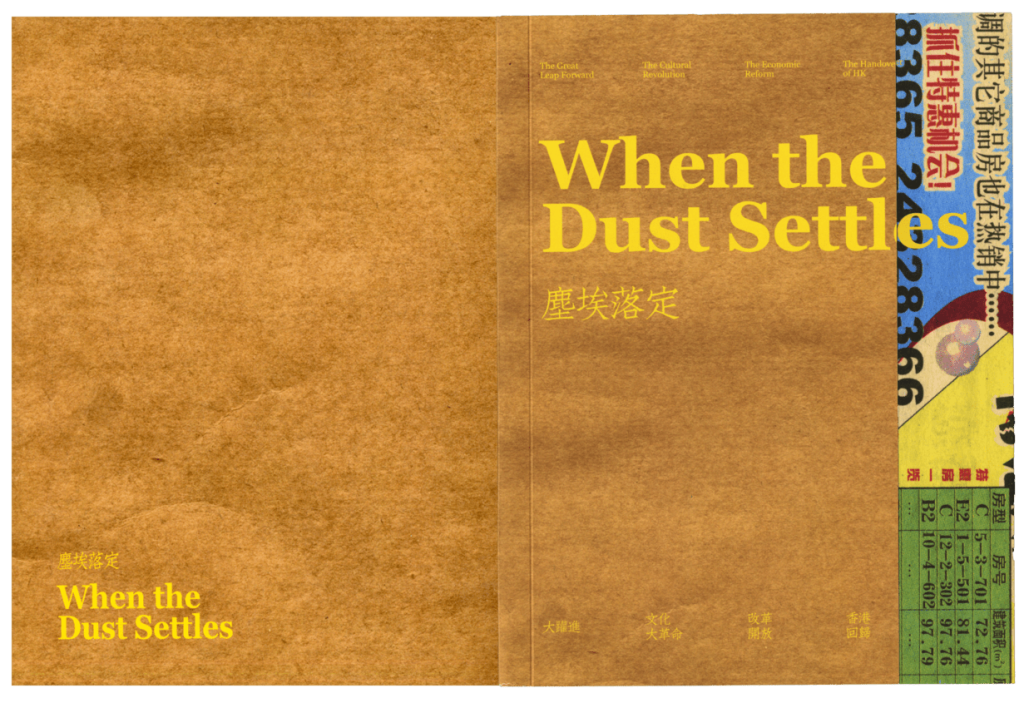
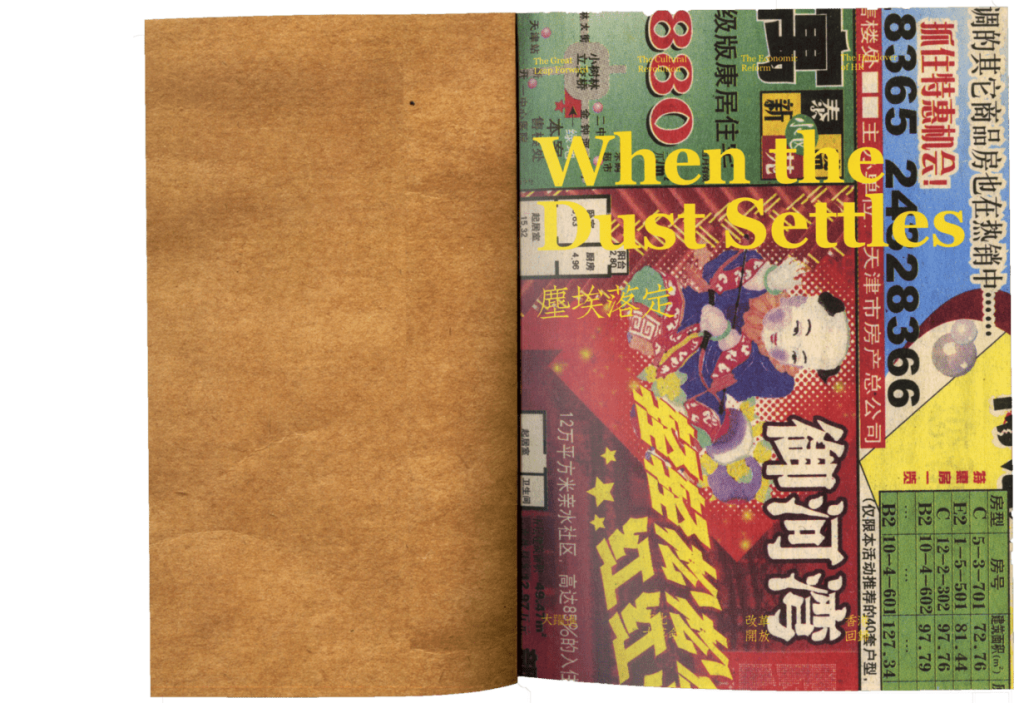
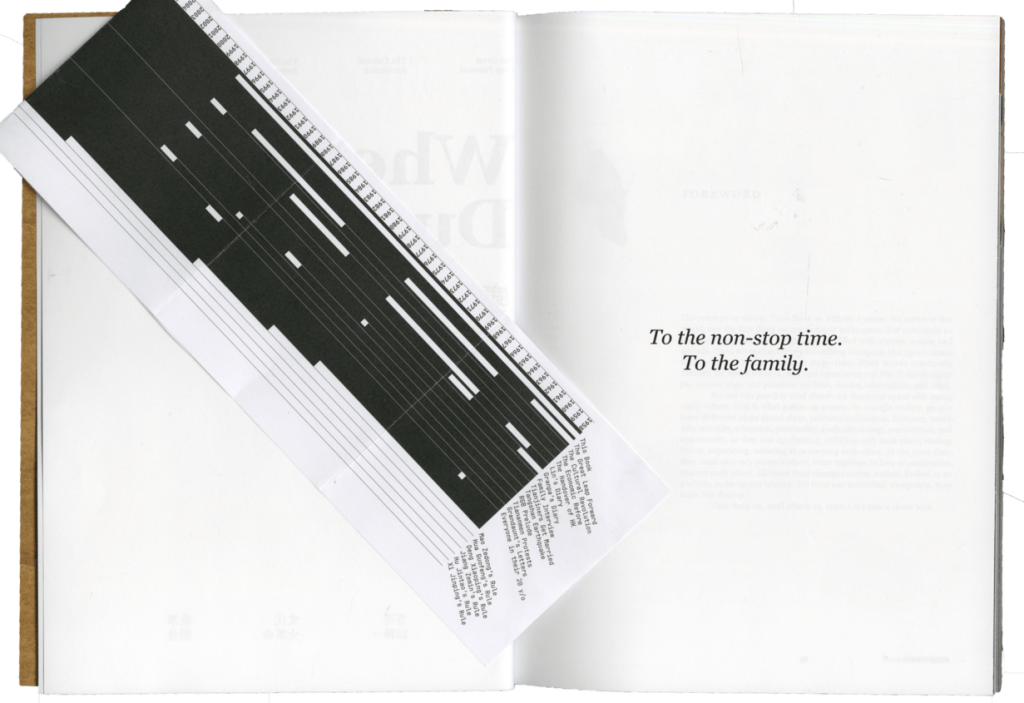

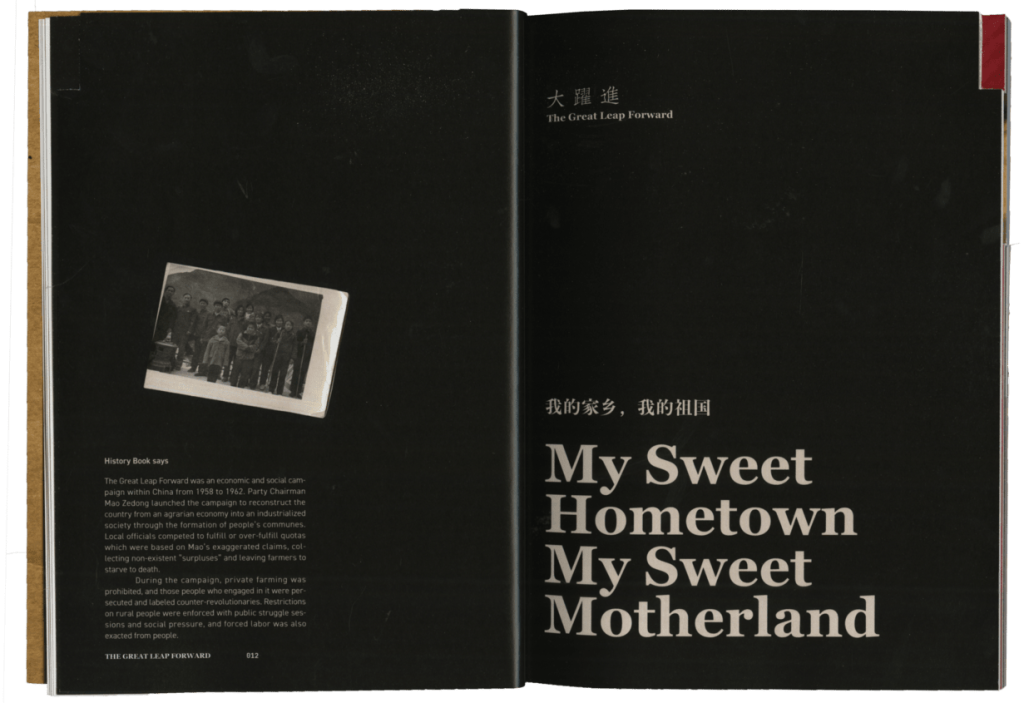
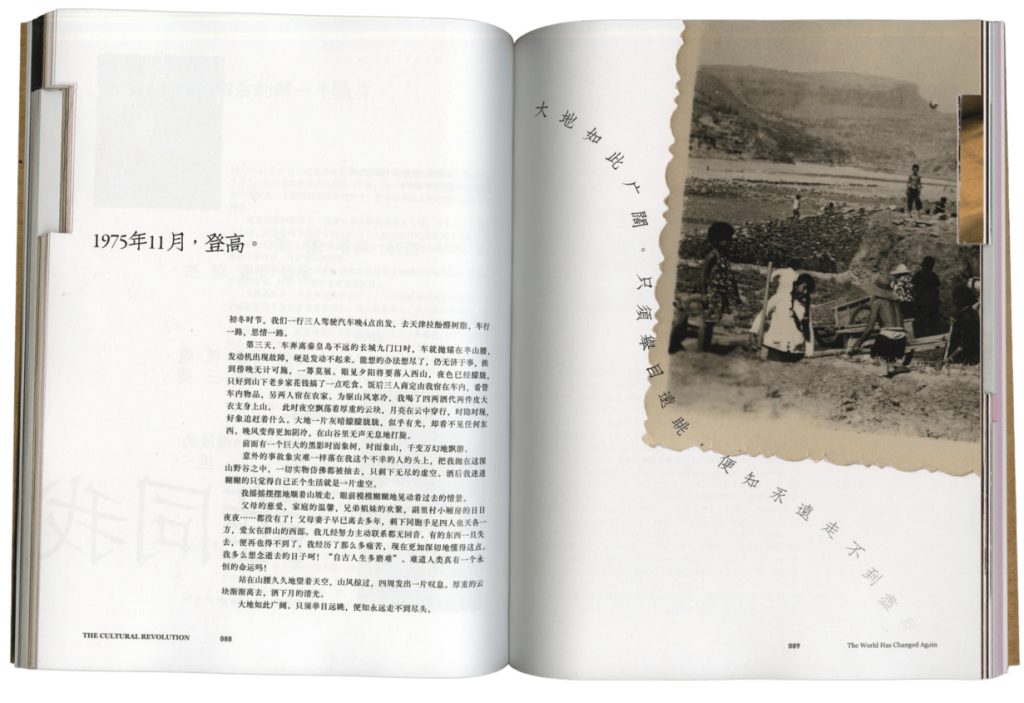
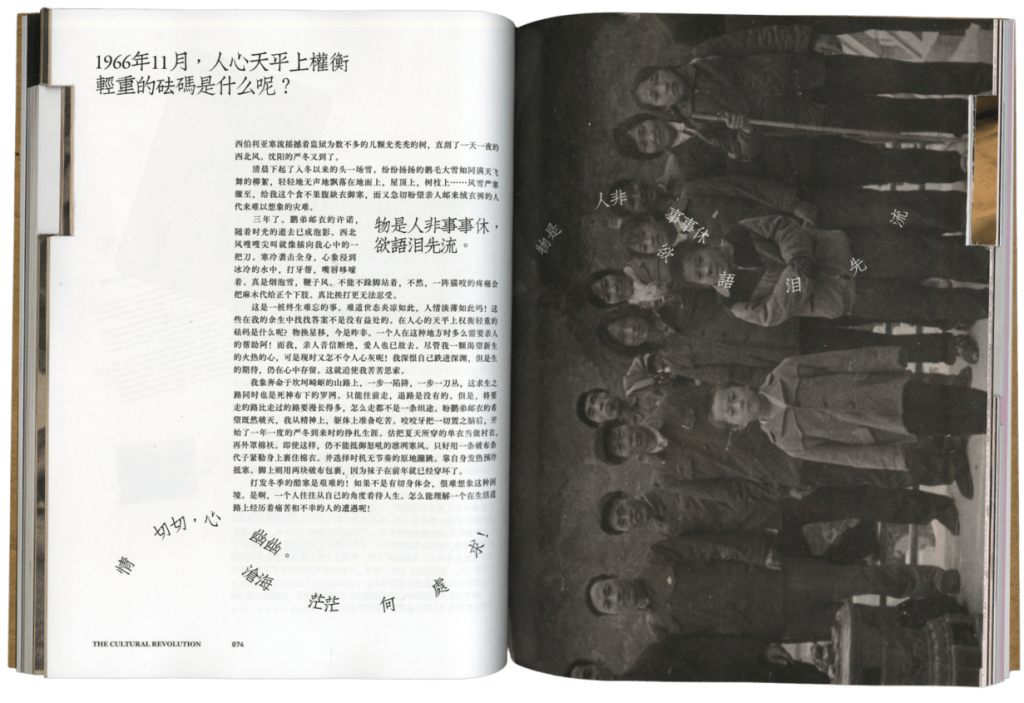
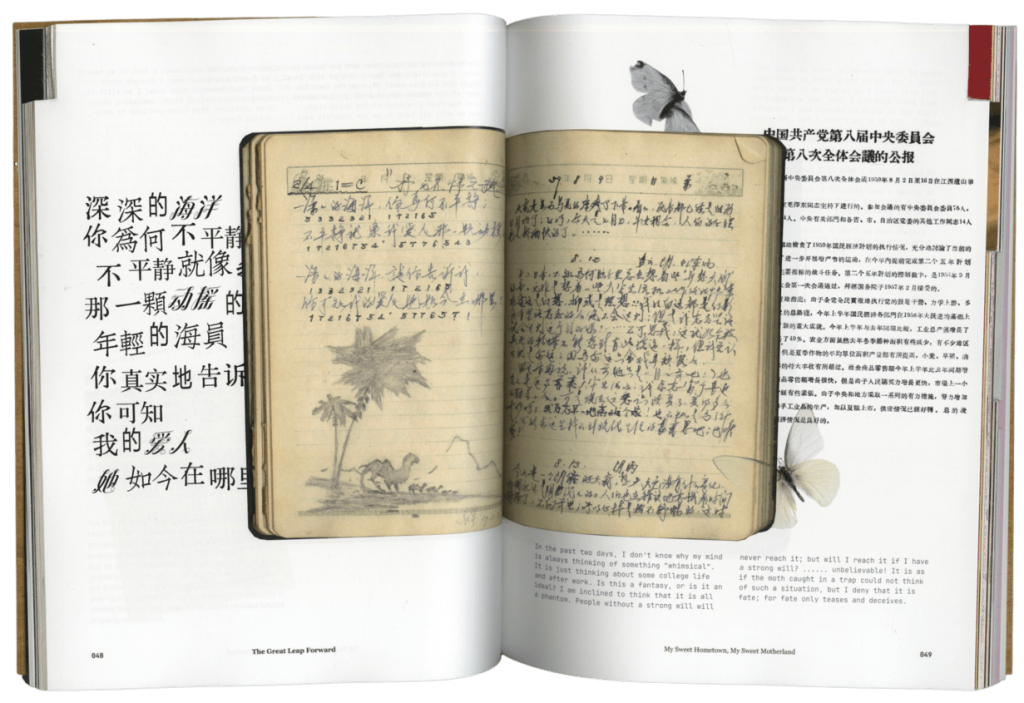
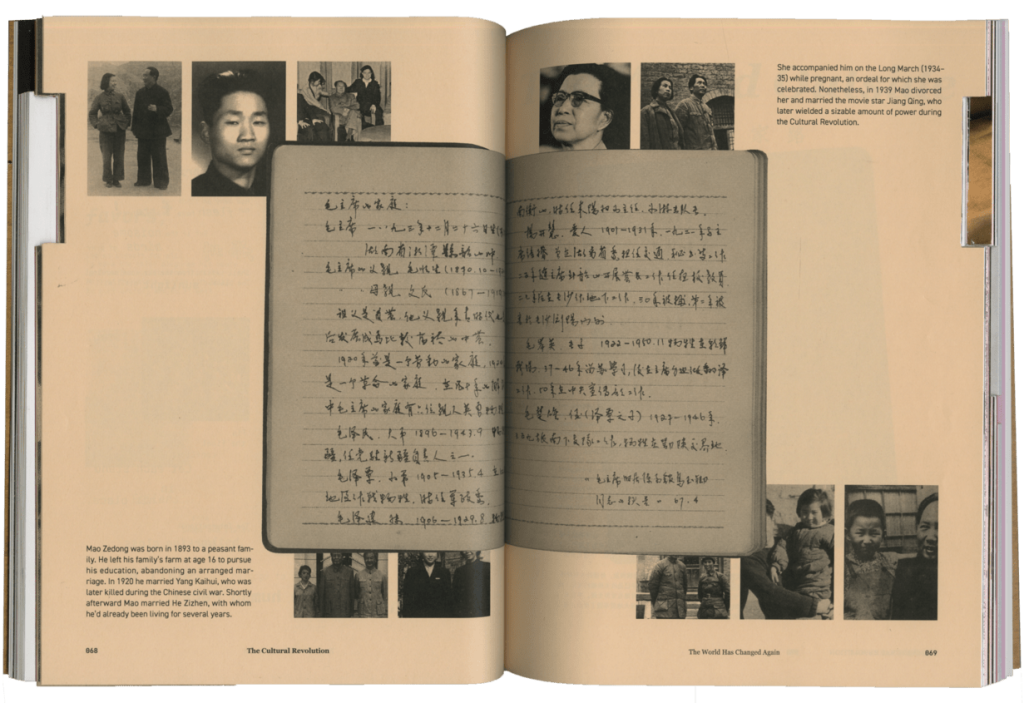
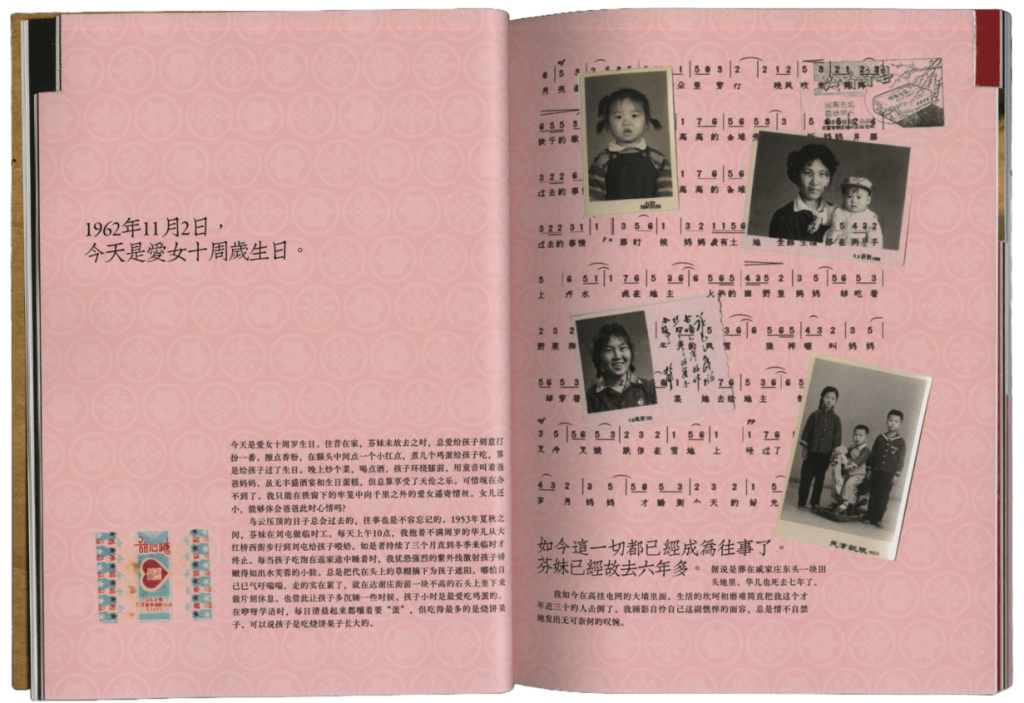
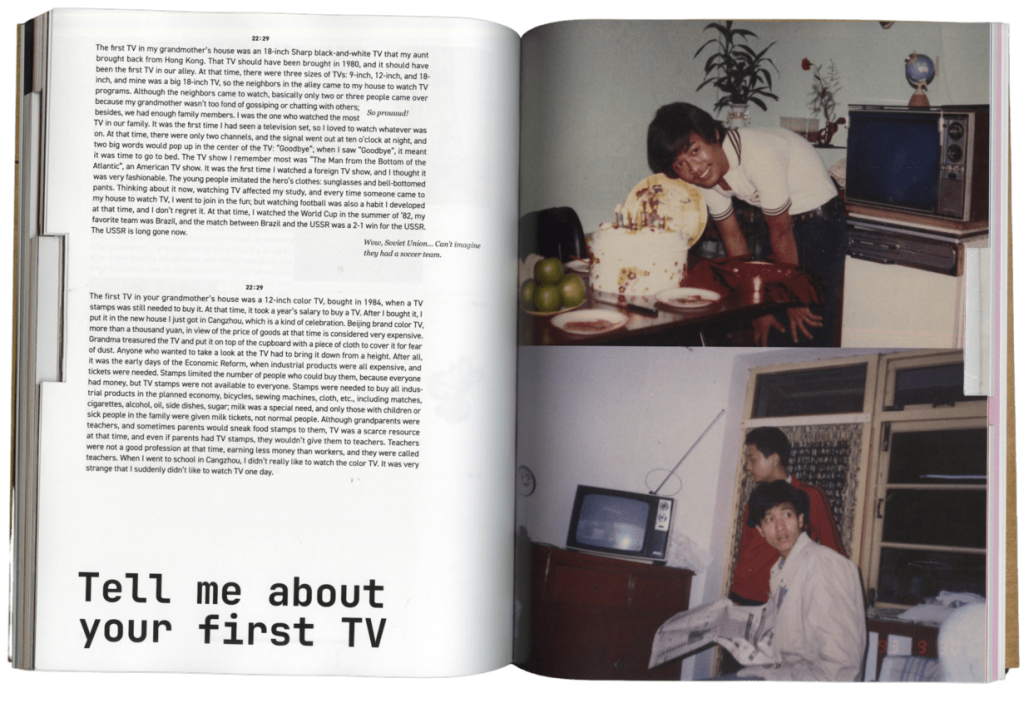
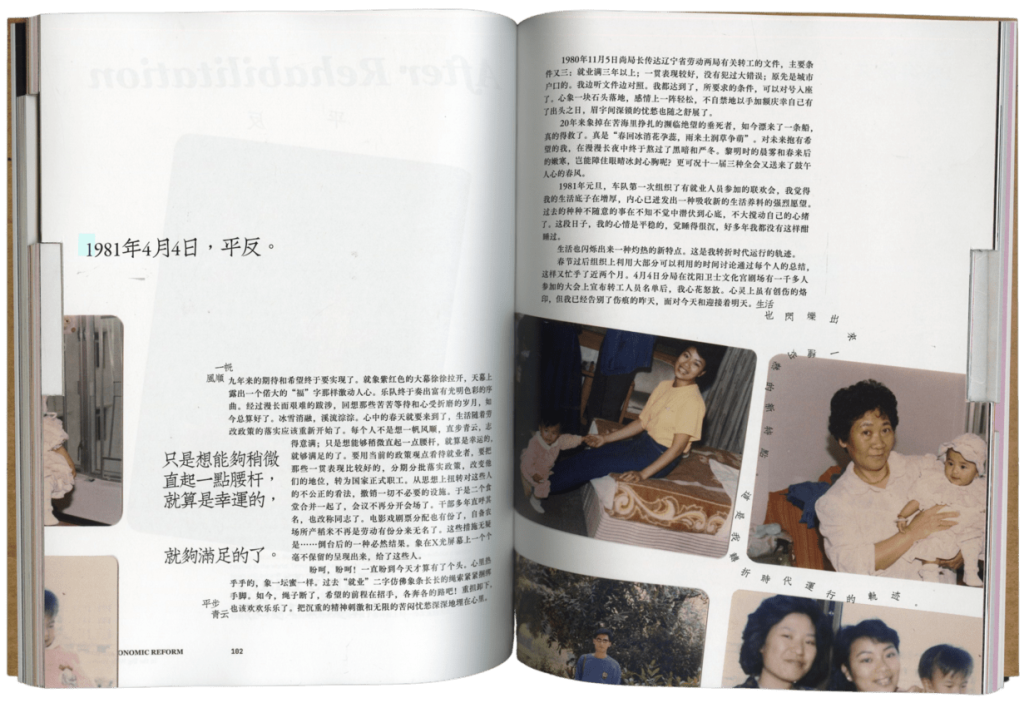
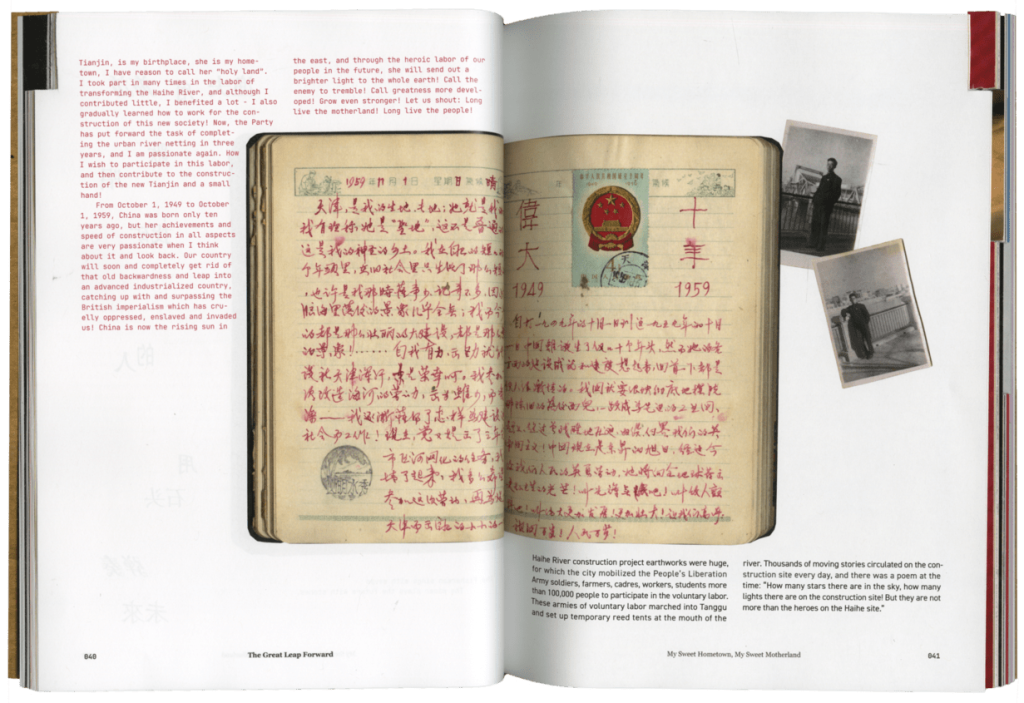
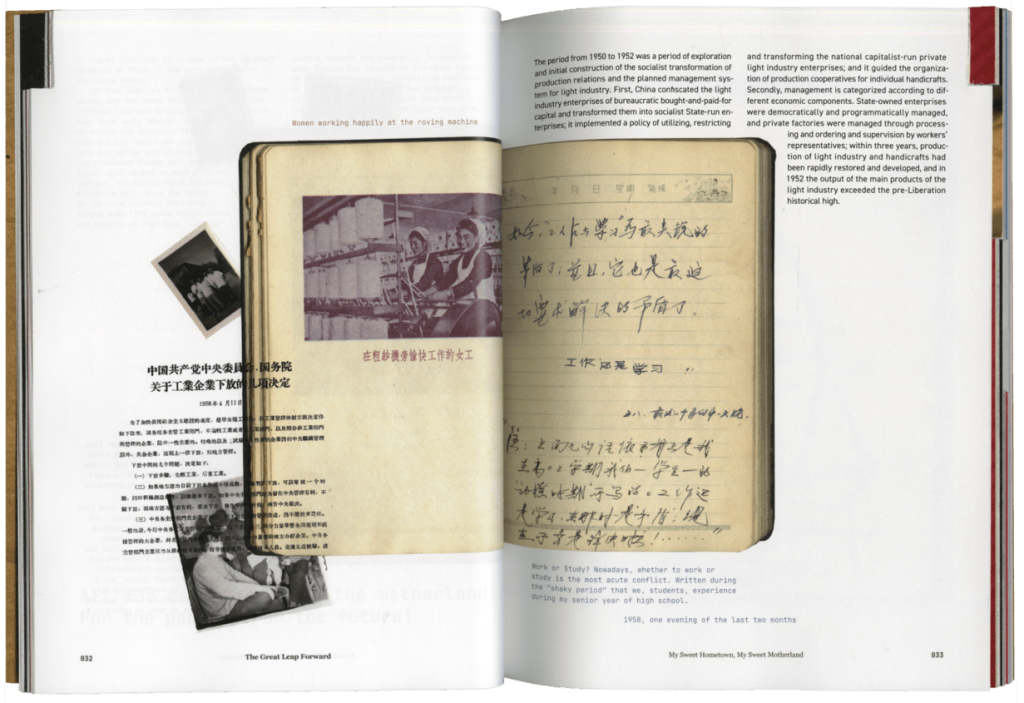
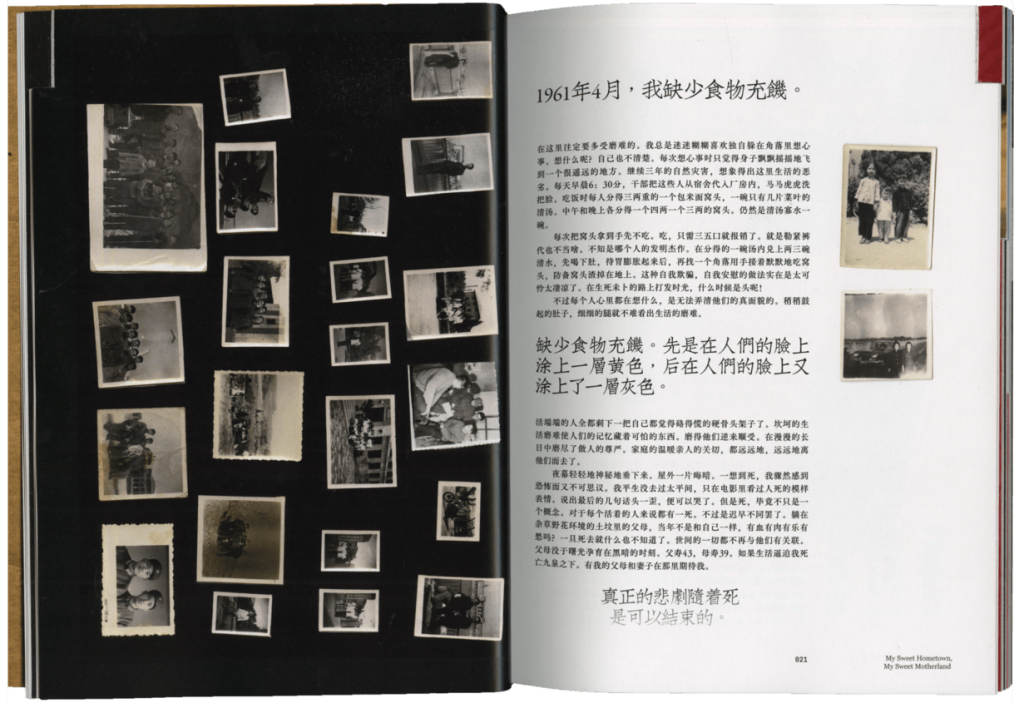
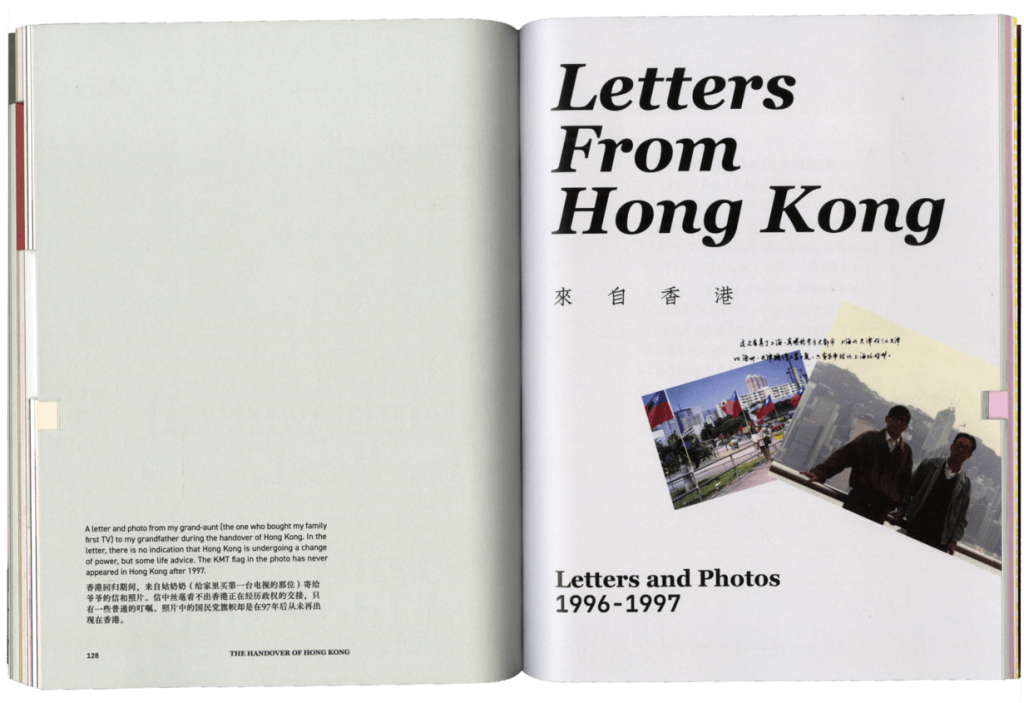
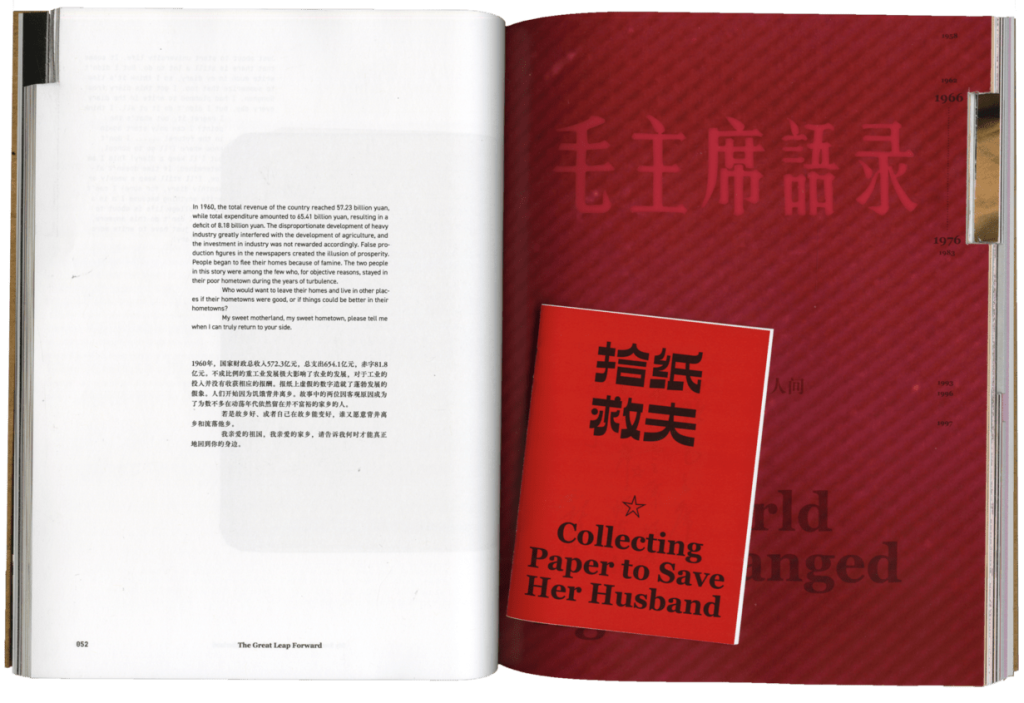
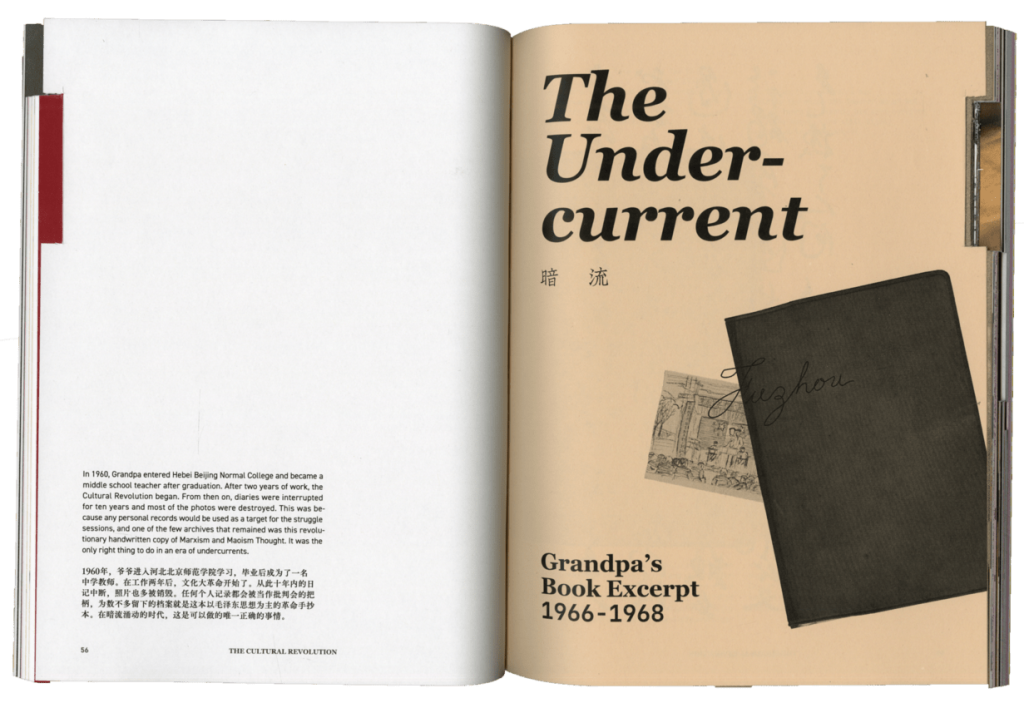

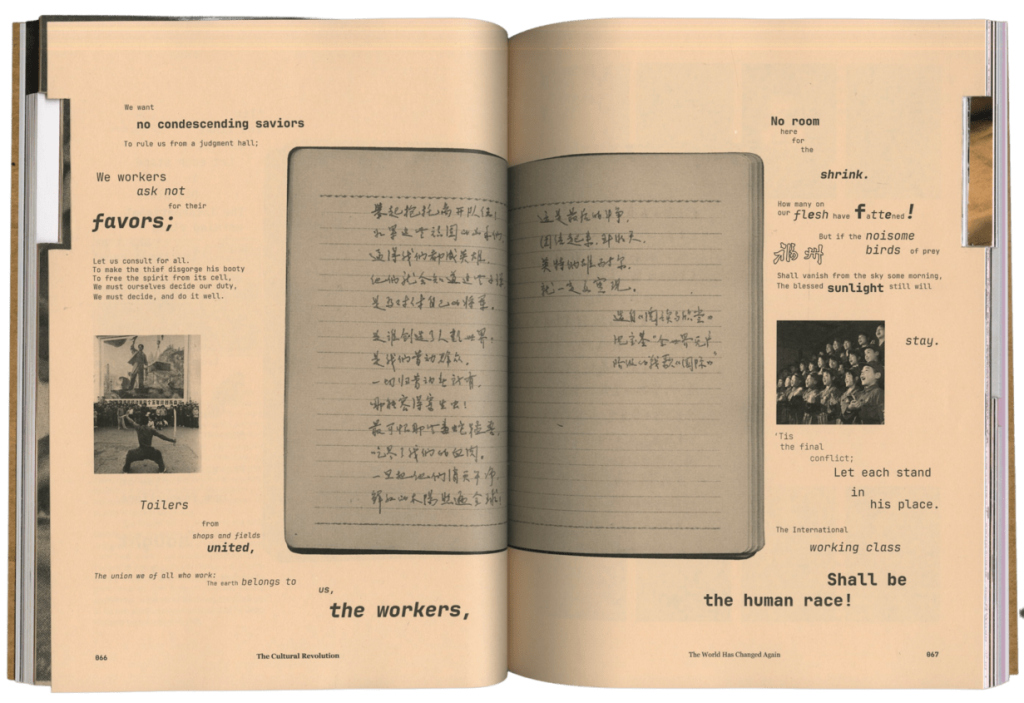
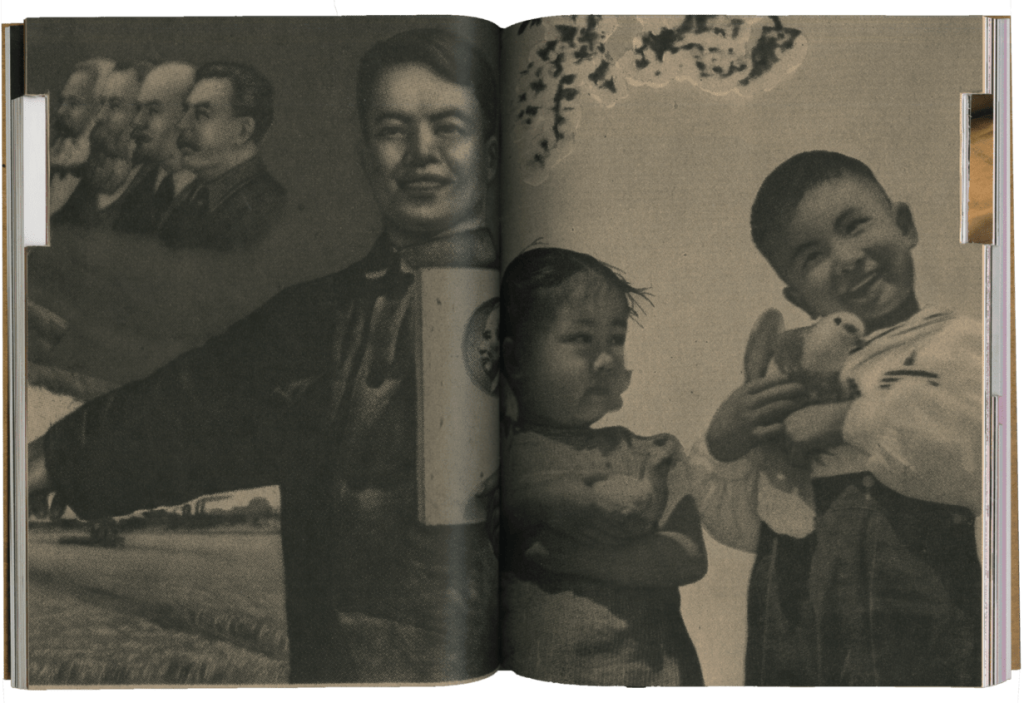
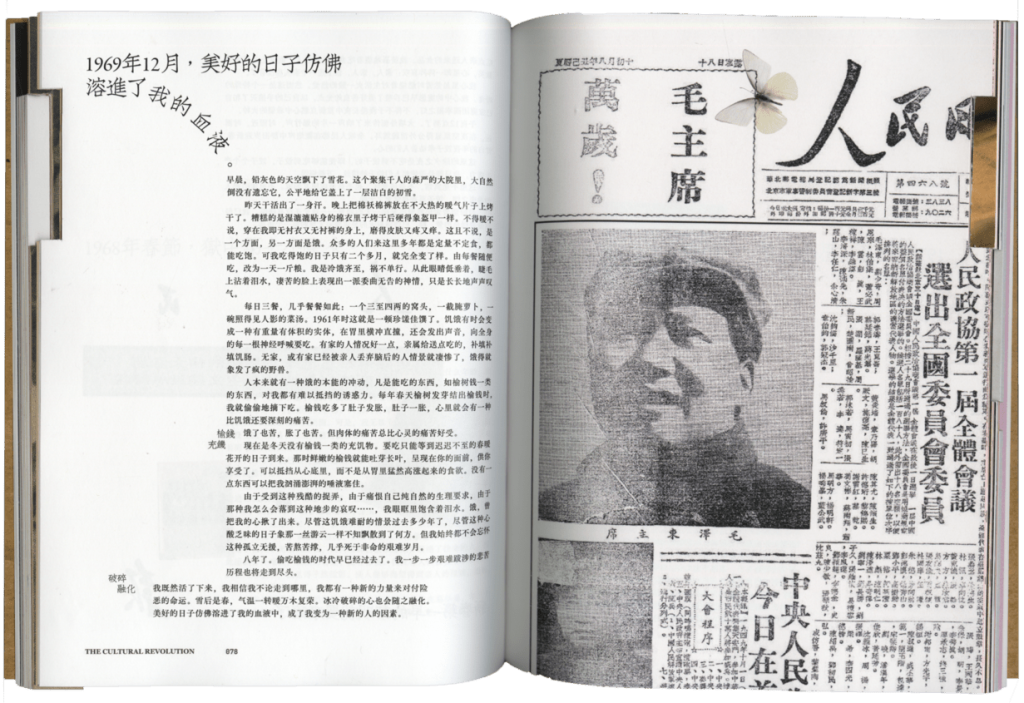

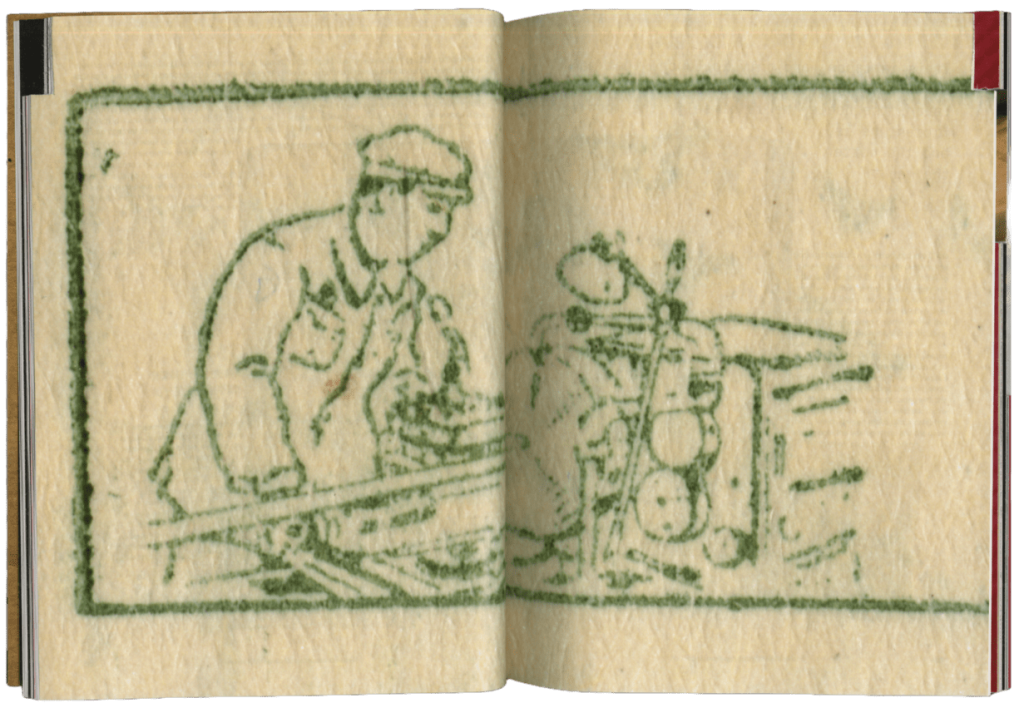
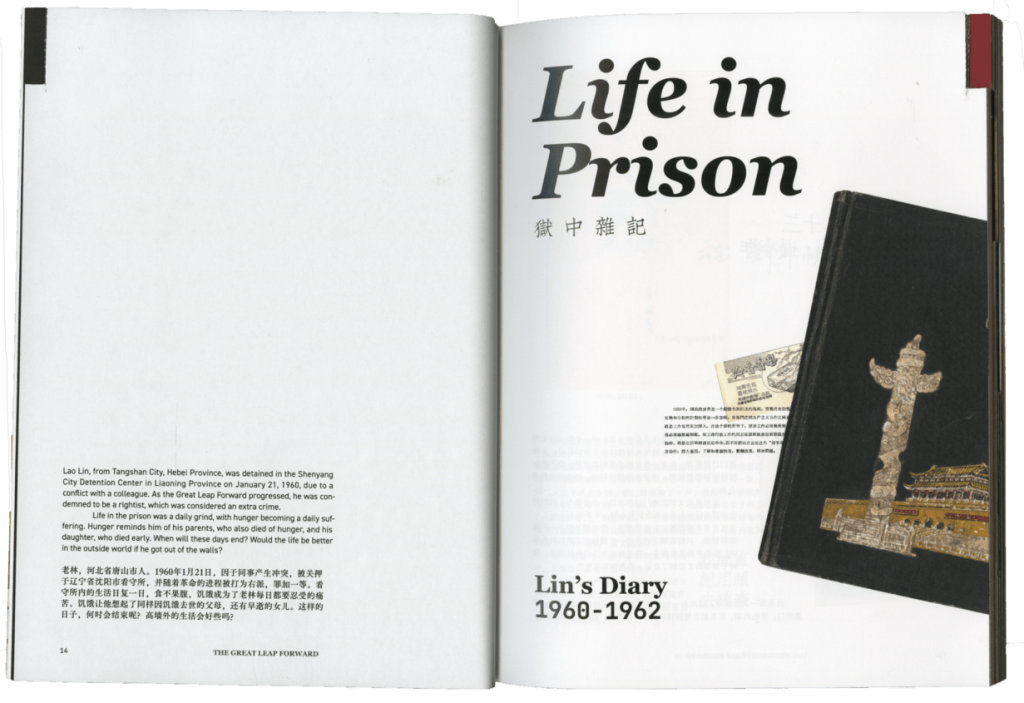
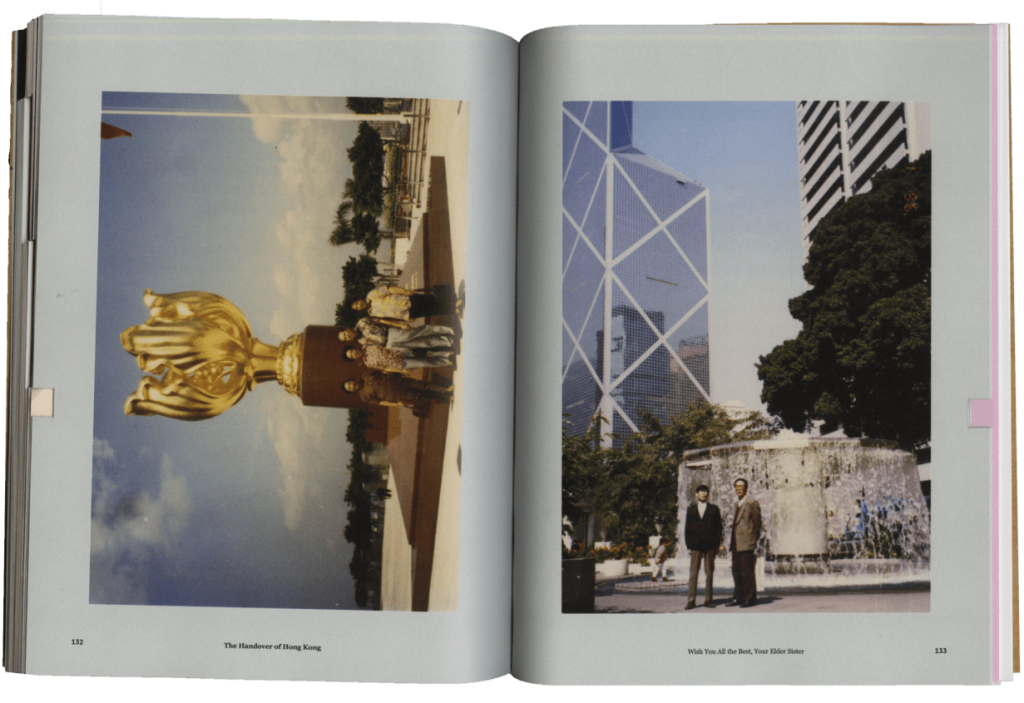
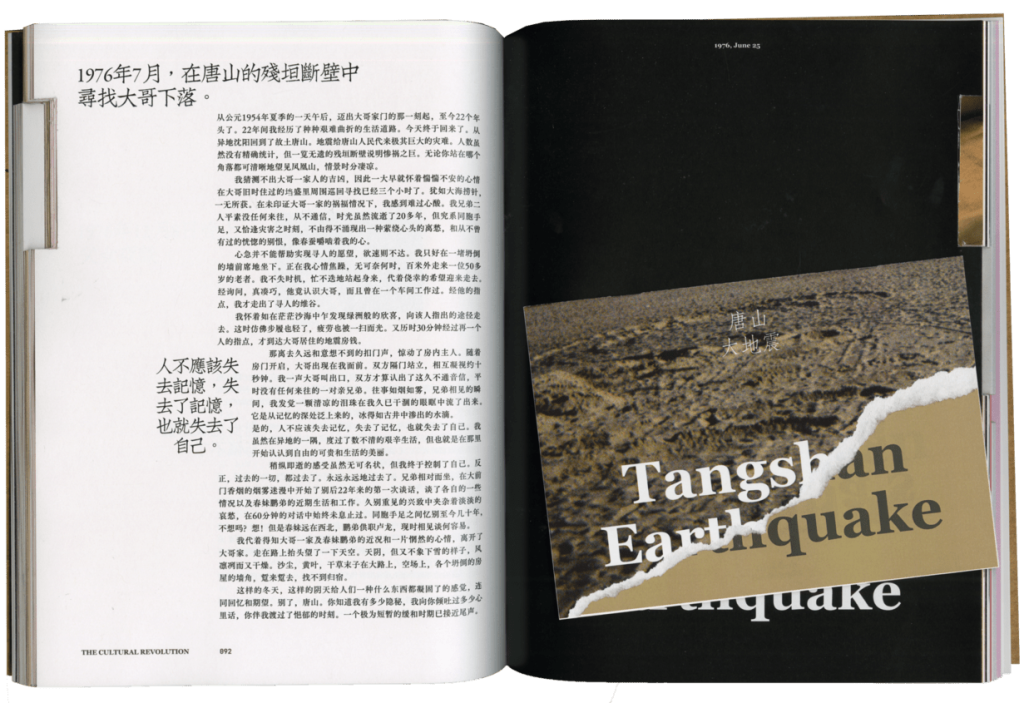
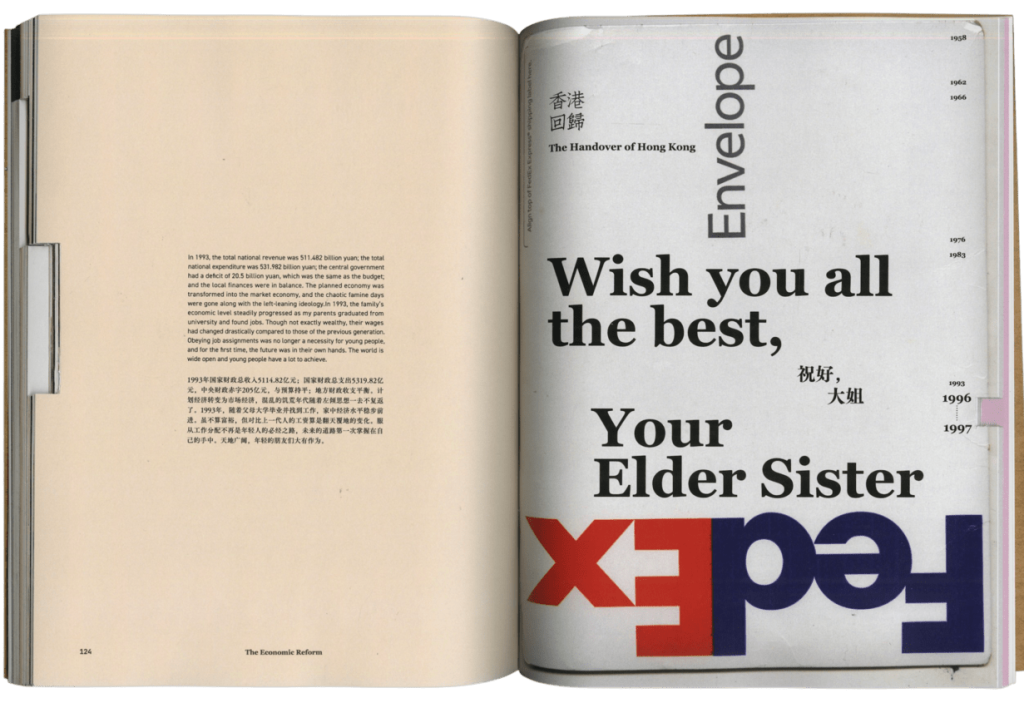
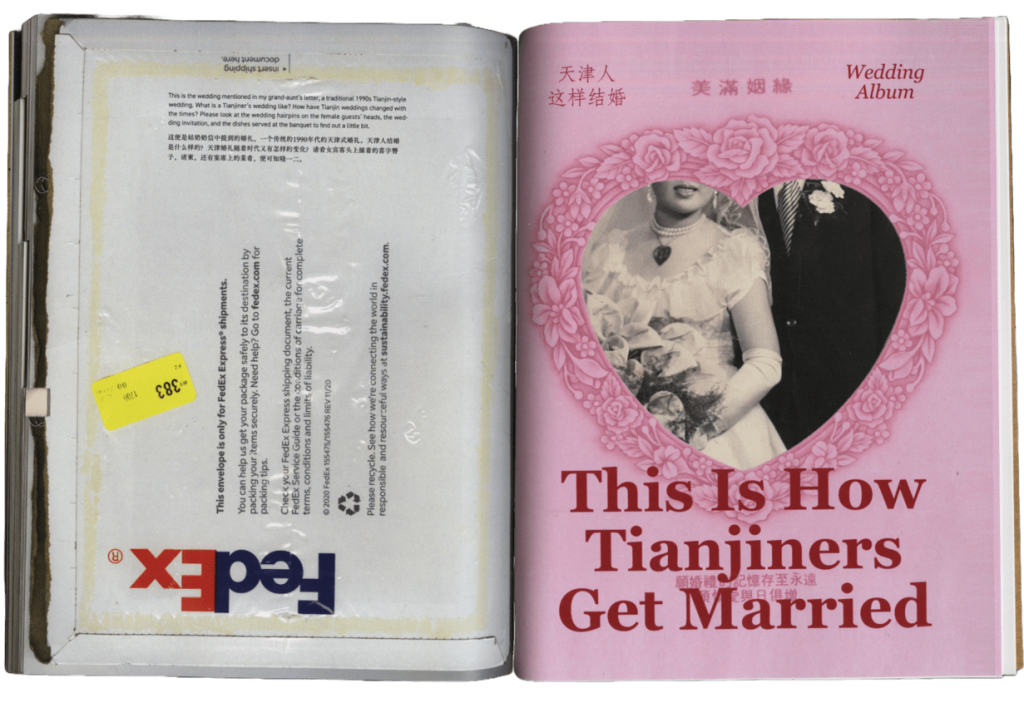
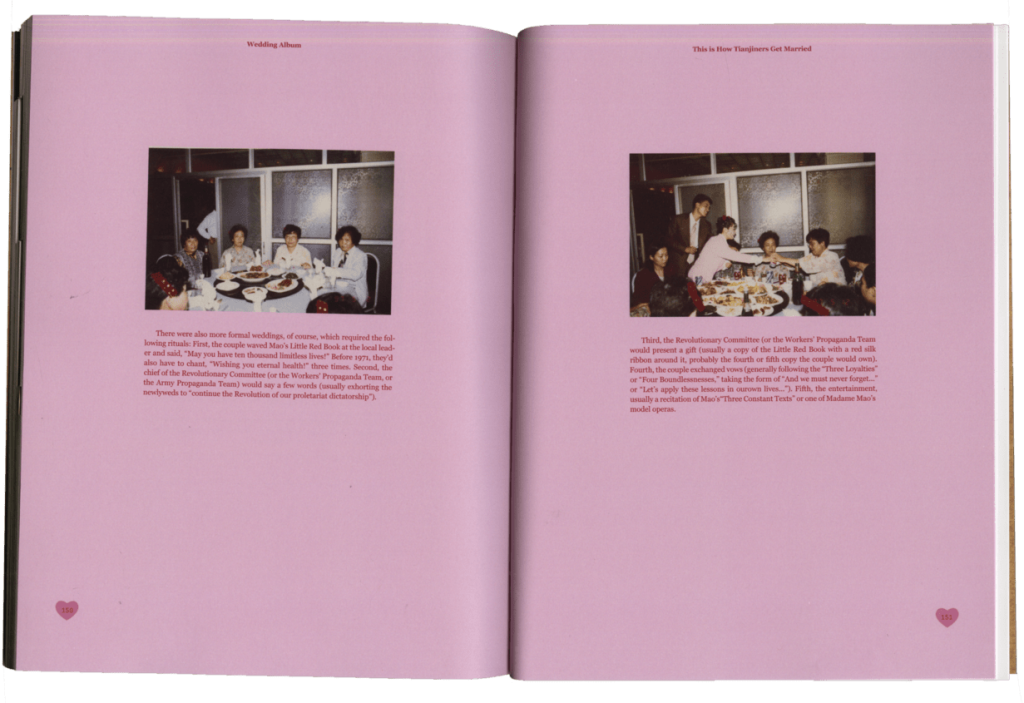
Specification: 7.6 × 10 in.
Glue binding
Typefaces: Georgia, JetBrain Mono, DIN 2014 (English) |
筑紫A老明朝, 文悦古体仿宋 (Simplified Chinese)
⇣ Watch the video walkthrough of the entire book.
Video credit: CCTV Spring Festival Gala, 1983
Music credit: 绒花 by 李谷一
✸ Afterword
This project sparked my interest in editorial design. I found joy in collecting nearly 100% original content from my family and previous writings, resulting in a final delivery that felt like a memoir of my family. Curating the original content was challenging but rewarding. When it comes to expressing my family and culture, words often fall short. Images, collages, and layout designs then became my voice, reminding me of my aspiration to become a communication designer. Visual language has the power to transcend language barriers and convey my stories further than words alone ever could. Looking ahead, I plan to expand this project over a longer timeline, extending the recorded history from 1958 to 1996 and beyond.
Acknowledgments
I am grateful to my instructors, Charlotte Falk, Jon Hannan, Gabe Wong, and Marcia Higuchi, for their unwavering support and professional guidance throughout the year. Your insights were invaluable in directing me through the project development and production.
Lastly, I extend my deepest gratitude to my parents, who served as both co-designers and life mentors. Your willingness to share our family archives and stories since my childhood has been instrumental in shaping my creativity and openness. I am who I am today because of your inspiration and support.

Family photo, 2004
